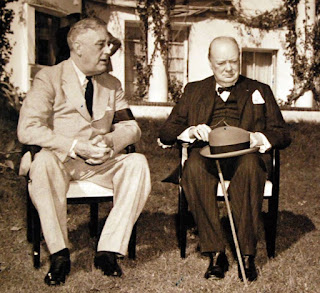CHRISTOPHER LUXON has announced that by late-September 2025 New Zealand might be ready to recognise Palestinian statehood. This curiously equivocal statement contrasts sharply with Australian Prime Minister Anthony Albanese’s firm commitment to recognise that unfortunate entity. Australia’s pledge matches those already given by France, the United Kingdom, and Canada. Of New Zealand’s ‘Five Eyes” partners, only the United States stands unequivocally behind Israel. Benjamin Netanyahu’s list of reliable allies grows thin.
But, does New Zealand’s reticence merit the criticisms levelled at it by supporters of the Palestinian cause? When the Australian Foreign Minister, Penny Wong, can tell journalists that Australia is moving to recognise Palestine “while there is still a Palestine to recognise”, then, surely, New Zealand awaiting the outcome of the monstrous events currently convulsing Gaza and the West Bank bears all the hallmarks of wisdom?
It might also be prudent to ascertain exactly what sort of “state” New Zealand is being called upon to recognise. If we are talking about the partitioned territory offered to the Palestinians in 1947, the boundaries of which the Palestinian authorities, such as they were at the time, emphatically rejected, then the harsh truth of the matter is that, within those boundaries, there is precious little left out of which a recognisable state of any kind could be fashioned.
As anyone who watches the news networks is only too aware, the Gaza Strip (as it was known in 1947) has been turned into a grey waste of dust and rubble. In their biblically ferocious quest for vengeance, the Israeli Defence Force has done its best (and its best is terrifying) to leave not one stone standing upon another. Indeed, not since Rome conquered Carthage has the victors’ determination to utterly destroy their enemy been so openly displayed.
The Roman historian Tacitus famously observed that “Rome makes a desert and calls it peace.” Benjamin Netanyahu goes one better. He will not even talk of peace until he has made a desert out of Gaza – and strewn it with the bones of Hamas’s fighters.
The West Bank is larger than Gaza, but only marginally more favoured. Bisected by walls, bedevilled by endless checkpoints, its people are hemmed in on every side. Israeli soldiers and their bulldozers flatten whole blocks of the West Bank’s beleaguered towns – pour encourager les autres. The flower of Palestinian youth: those whose slingshot stones have not been repaid with the explosive bullets of Israeli snipers; rot in Israeli jails. Their grandparents’ olive groves burn in the night, their livestock are driven off. Those who venture out bravely in search of their stolen goats are beaten, stabbed, shot.
Because not all the hills of the West Bank have been disfigured by the Israeli occupation. Cascading down some hillsides are the gleaming homes and lush gardens of the settler communities. As beautiful as they are illegal these settlements are peopled by fanatics every bit as bright-eyed and implacable as Hamas. When it comes to their Palestinian “neighbours”, there is only one state these settlers are looking forward to recognising – their absence.
There was a time when the “two-state solution” promoted by the United Nations seemed a viable prospect. So much so that, with generous donations from the backers of a free, democratic, and independent Palestine, its presumptive rulers commenced constructing an impressive parliamentary complex for its legislators to sit in.
Elegant of line, impressive in its austere functionality, the structure took shape in Abu Dis a neighbourhood of East Jerusalem – the designated capital of the Palestinian state. In 2003, however, construction ceased. The Second Palestinian Intifada (uprising) was in the process of suffocating the Oslo Peace Accords in tear-gas, shrapnel and blood. The Israelis responded by building their infamous “Separation Wall”.
From the river to the sea there would be only one state.
Palestine’s half-completed parliament is still there, a dark and cavernous testimonial to diplomatic and moral failure. The building’s grey concrete walls are stained, as if by the tears of all those on both sides of the conflict who were forced to abandon their dream of a peaceful two-state future.
Nations that present the recognition of Palestine as some sort of panacea, should be made to argue their case from the cold concrete platforms of that doomed and gloomy monument. Hopefully, Christopher Luxon knows better than to sit there with them.
This essay was originally published in The Otago Daily Times and The Greymouth Star of Friday, 15 August 2025.











